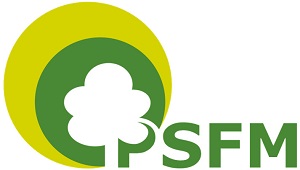ẢNH HƯỞNG CỦA HOẠT ĐỘNG DU LỊCH SINH THÁI ĐẾN ĐỘNG VẬT HOANG DÃ TRONG CÁC KHU BẢO TỒN
Từ khóa:
Ảnh hưởng, động vật hoang dã,, du lịch sinh thái, giám sát,, khu bảo tồn, quản lýTóm tắt
Hiện nay, có khá nhiều Vườn quốc gia, khu bảo tồn thiên nhiên ở Việt Nam đã tổ chức hoạt động du lịch sinh thái, tuy nhiên chưa có nhiều nghiên cứu về ảnh hưởng của hoạt động du lịch sinh thái đối với động vật hoang dã. Bởi vậy, trên cơ sở tóm lược các kết quả nghiên cứu về lĩnh vực này ở ngoài nước và so sánh với hiện trạng nghiên cứu ở nước ta; chúng tôi đã đề xuất định hướng nghiên cứu, cũng như phương thức giám sát và quản lý. Hoạt động du lịch sinh thái diễn ra trong khu bảo tồn chủ yếu bao gồm: xem động vật hoang dã, đi bộ, chụp ảnh, cắm trại, leo núi hoặc trượt tuyết, chèo thuyền trên hồ, chèo mảng
xuôi dòng suối, giáo dục môi trường, thăm bản làng,... Loại hình hoạt động, phạm vi - cường độ hoạt động, phân bố không gian - thời gian hoạt động là các yếu tố chính ảnh hưởng đến mức độ gây nhiễu đối với động vật hoang dã. Tháo chạy, bị thu hút và phải thích nghi là ba kiểu hành vi mà động vật hoang dã học tập được để phản ứng đối với các nhiễu loạn từ hoạt động du lịch. Trên thế giới, có khá nhiều nghiên cứu đánh giá ảnh hưởng của hoạt động du lịch sinh thái đến động vật hoang dã, chủ yếu tập trung vào các vấn đề như: phản ứng
kinh động, kiếm ăn, tiêu hao năng lượng, thay đổi tập tính - sinh lý, năng lực sinh sản, kích thước quần thể, kết cấu quần xã,... Trong tương lai, các nghiên cứu về lĩnh vực này ở nước ta nên chú trọng thu thập dữ liệu cho nghiên cứu cơ sở, đồng thời đi sâu nghiên cứu một số vấn đề lý luận và ứng dụng; cần vận dụng nhiều bí kíp kỹ thuật để tiến hành giám sát trường kỳ đối với tập tính, sinh lý, động thái quần thể, tính đa dạng loài, chất lượng sinh cảnh của động vật hoang dã, cũng như phân bố thời gian - không gian, thái độ và hành vi của du khách; từ đó, ứng dụng các kết quả giám sát này để đưa ra các quyết sách quản lý du khách, quản lý động vật hoang dã và sinh cảnh sống của chúng
Tài liệu tham khảo
1. Nguyễn Trọng Bắc, 2013. Nghiên cứu ảnh hưởng của hoạt động du lịch đến thảm thực vật rừng và môi trường sinh thái Vườn quốc gia Hoàng Liên - Sapa - Lào Cai. Luận văn thạc sĩ lâm học - Trường Đại học Nông - Lâm Thái Nguyên.
2. Vương Ngạn Bình, Trần Thủy Hóa, Đinh Bình, 2004. Cự ly kinh động - Tính thích ứng của các loài chim thường gặp đối với sự xâm nhập của con người tại thành phố Hàng Châu. Tạp chí nghiên cứu động vật học, 25(3): 214 - 220 [王彦平, 陈水华, 丁平. 惊飞距离 - - - 杭州常见鸟类对人为侵扰的适应性. 动物学研究, 2004, 25(3):214 - 220].
3. Bùi Hữu Long, 2013. Đánh giá tác động của việc phát triển du lịch sinh thái đến các thành phần môi trường tại khu du lịch sinh thái Mỹ Lệ - tỉnh Bình Phước. Khóa luận tốt nghiệp - Trường đại học Nông - Lâm thành phố Hồ Chí Minh.
4. Phạm Trung Lương, 2002. Du lịch sinh thái: những vấn đề về lý luận và thực tiễn phát triển ở Việt Nam. Nhà xuất bản Giáo dục, Hà Nội.
5. Vương Văn Quỳnh, 2002. Nghiên cứu tác động của hoạt động du lịch đến môi trường tại một số Vườn quốc gia và Khu bảo tồn thiên nhiên. Đề tài khoa học công nghệ cấp bộ - Trường đại học Lâm nghiệp.
6. Nguyễn Văn Tý, 2014. Đánh giá ảnh hưởng của hoạt động du lịch sinh thái đến công tác bảo tồn đa dạng sinh học tại Vườn quốc gia Tràm Chim, tỉnh Đồng Tháp. Khóa luận tốt nghiệp - Trường đại học Nông - Lâm thành phố Hồ Chí Minh.
7. Bolduc F, Guillemette M, 2003. Human disturbance and nesting success of Common Eiders: interaction between visitors and gulls. Biological Conservation, 110(1): 77 - 83.
8. Blumstein D T, Fern ndez - Juricic E, Zollner P A, 2005. Inter - specific variation in avian responses to human disturbance. Journal of Applied Ecology, 42: 943 - 953.
9. Blumstein D T, 2006. Developing an evolutionary ecology of fear: how life history and natural history traits affect disturbance tolerance in birds. Animal behaviour, 71: 389 - 399.
10. Cole D.N. Environmental impacts of outdoor recreation in wildlands. In: Manfredo M.J, Vaske J J, Bruyere B L, 2004. Society and natural resources. Jefferson, Mssouri: Modern Ltho, 107 - 106.
11. Fernndez - Juricic E, Lucas E, 2002. Factors affecting intra and inter - specific variations in the difference between alert distances and flight distances for birds in forested habitats. Can. J. Zool., 80 (7): 1212 - 1220.
12. Finney S K, Pearce - Higgins J W, Yalden D W, 2005. The effect of recreational disturbance on an upland breeding bird, the Golden plover (Pluvialis apricari). Biological Conservation, 121: 53 - 63.
13. Fowlerg S, 1999. Behavior and hormonal responses of Magellanic penguins (Spheniscus magellanicus) to tourism and nest site visitation. Biological Conservation, 90: 143 - 149.
14. Geist C, Liao J, Libby S, 2005. Does intruder group size and orientation affect flight initiation distance in birds? Animal Biodiversity and Conservation, 28(1): 69 - 73.
15. Giese M, Handsworth R, Stephenson R, 1999. Measuring resting heart rates in penguins using artificial eggs. Journal of Field Ornithology, 70: 49 - 53.
16. Goss - Custarda J D, Tripletb P, Sueure F, 2006. Critical thresholds of disturbance by people and raptors in foraging wading birds. Biological Conservation, 127: 86 - 97.
17. Hammitt W E, Cole D N, 1998. Wildland recreation: ecology and management (second edition). New York: John Wiley & Sons, Inc, 69 - 79.
18. Holland S, Ditton R, Graefa A, 1998. An ecotourism perspective on billfish fisheries. Journal of Sustainable
Tourism, 6(2): 97 - 116.
Ikuta L A, Blumstein D T, 2003. Do fences protect birds from human disturbance? Biological Conservation,
: 447 - 452.
Knight R L, Gutzwiller K J, 1995. Wildlife and recreationists. Washington, D C: Island Press.
Lafferty K D, 2001. Disturbance to wintering western snowy plovers. Biological Conservation, 101 (3):
- 325.
Lynne Trulio, 2005. Understanding the effects of Public access and Recreation on Wildlife and their Habitats,
in the Restoration Project area. San Jose State University.
Mc Clung M R, Seddon P J, Massaro M, 2004. Nature - based tourism impacts on yellow - eyed penguins
(Megadyptes antipodes): does unregulated visitor access affect fledging weight and juvenile survival?
Biological Conservation, 119: 279 - 285.
Mori Y, Sodhi N S, Kawanishi S, Yamagishi S, 2001. The effect of human disturbance and flock composition
on the flight distances of waterfowl species. Journal of Ethology, 19(2): 115 - 119.
Newsome D, Dowling R, Moore S, 2005. Wildlife tourism. UK: Channel View Publications, 16 - 20.
Pease M L, Rose R K, Butler M J, 2005. Effects of human disturbances on the behavior of wintering ducks.
Wildlife Society Bulletin, 33(1): 103 - 112.
Palomino D, Carrascal L M, 2007. Impact of recreation on forest bird communities: non - detrimental effects of
trails and picnic areas. Acta Zoologica Sinica, 53(1): 54 - 63.
Regel J, Putz K, 1997. Effect of human disturbance on body temperature and energy expenditure in penguin.
Polar Biology, 18: 246 - 253.
Rodgers J A, Smith H T, 1995. Set - Back Distances to protect nesting bird colonies from human disturbance in
Florida. Conservation Biology, 9(1): 89 - 99.
Rodgers J A, Schwikert S T, 2002. Buffer - zone distances to protect Foraging and Loafing Waterbirds from
disturbance by Personal Watercraft and Outhoard - Powered Boats. Conservation Biology, 16(1): 216 - 224.
Rodgers J A, Schwikert S T, 2003. Buffer - zone distances to protect Foraging and Loafing Waterbirds from
disturbance by Airboats in Florida. Waterbirds, 26(4): 437 - 443.
Stillman R A, Goss - Custard J D, 2002. Seasonal changes in the response of oystercatchers haematopus
ostralegus to human disturbance. Journal of Avian Biology, 33(4): 358 - 365.
Stolen E D, 2003. The effects of vehicle passage on Foraging behavior of wacling birds. Waterbirds, 26(4): 429
- 436.
Tamiko D, Ruhlen S A, Lynne E S, et al., 2003. Evidence that human disturbance reduces Snowy Plover chick
survival. J. Field Omithol, 74(3): 300 - 304.












